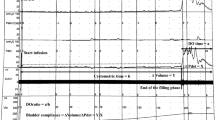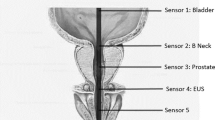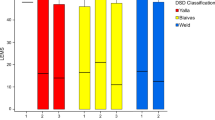Abstract
Study design: Retrospective audit and interview-based study of a traumatic spinal cord injured cohort, assessing the incidence and risk of epididymo-orchitis (E-O).
Objectives: Assess the potential risk factors for E-O in this cohort (spinal cord injured patients).
Setting: Janbazan Clinic for Spinal Cord Injuries, Mashad, Iran.
Methods: A retrospective notes audit of 169 male traumatic spinal cord injured (SCI) patients was performed. In addition, interviews were performed to confirm any equivocal data. The following risk factors were assessed: history of recurrent urinary tract infections (UTIs), urethral stricture, urethral diverticuli, urinary fistula, urinary calculi, spinal injury type, neurogenic bladder type, autonomic dysreflexia, vesico-ureteral reflux, sphincterotomy, vasectomy, marriage status, bladder residual and emptying method, ejaculation, spinal injury level, micturation control, and muscular spasm, which included detrusor, external sphincter or lower limb spasm.
Results: A total of 65 patients from our group (38.5%) had suffered E-O at least once. E-O presented on average, 3.9 years after the SCI. Patients with a history of muscular spasm appeared less likely to develop E-O (P<0.05). None of the vasectomised patients developed E-O. The relation between all the other factors and E-O were not significant.
Conclusions: Our study has shown that the presence of muscular spasm decreases the risk of E-O, although the mechanism remains unclear. Surprisingly, the other historical risk factors showed no clear relation with E-O occurrence.
Similar content being viewed by others
Introduction
Long-term follow-up of patients with traumatic spinal cord injuries (SCI) sustained during several wars demonstrated that urological complications were the leading cause of mortality, with 43% of all deaths related to renal diseases.1 Lapides et al2 introduced the concept of clean intermittent self-catheterisation (CISC), which improved the management of neuropathic bladders, and decreased the mortality.
Epididymo-orchitis (E-O) is a common complication of SCI associated with neuropathic voiding dysfunction, and is associated with a 50% risk of azoospermia, and thus infertility in paraplegic patients.3 We undertook a MEDLINE™ search (OVID™) between 1960 and April 2002 (keywords: epididymitis, orchitis and Epididymo-orchitis, combined with spinal injuries, spinal cord, urogenital diseases, urological diseases, and urinary tract infection (UTI)), which revealed a lack of comprehensive studies dealing with potential risk factors for E-O in SCI patients.
Thus, in an attempt to reduce the incidence of E-O and consequently the risk of infertility in these patients, we investigated risk factors predictive of E-O associated with SCI.
Patients and methods
We reviewed 169 male patients who sustained their wartime spinal injuries between 1980 and 1988. These patients were all victims of the Iran–Iraq war, and the Janbazan centre in the northern-east province of Khorasan treated all. The war was over before the study began. All patients were traumatic victims of the war (bullet injuries, shrapnel injuries, and blunt injuries secondary to explosions). There was no evidence that the spinal injuries were caused by chemical or nerve toxins.
A retrospective notes analysis and patient interview was performed. All patients were under protocol-based review every 3–6 months, including routine urinalysis (mid-stream urine culture and microscopy), blood (creatinine, electrolytes, and full blood count) and ultrasound imaging. Other investigations such as intravenous urogram (IVU) and retrograde contrast urethral studies were applied when necessary.
We studied 18 potential risk factors for epididymitis and orchitis based on two proposed mechanisms: infection and urological factors.4 Infective factors include a history of recurrent UTIs, urinary fistula, urethral diverticuli, urinary stones, bladder emptying methods, bladder residual urine, vesico-ureteral reflux, and micturition control. The urological factors were based on urethrovasal reflux and high voiding pressures,5 such as including a history of sphincterotomy,6 urethral stricture,7 neurogenic bladder,8 autonomic dysreflexia, and spinal injury type. Sensation on micturation was defined as the patient being incontinent, with sensation of voiding as reflected by incomplete spinal injury.
Vasectomy was also assessed as a potential inhibitor of urethro-vasal reflux. Ejaculation and marital status were also studied.
Bladder residual volume was measured by two methods: ultrasound scan, and the measurement of residual volume after catheterisation. Findings of voiding cysto-urethrogram (VCUG), ultrasound scan, and intravenous urogram (IVU) were used to determine vesico-ureteric reflux. Muscular spasm included detrusor, external urethral sphincter, and lower limbs muscular spasm. The main method for the diagnosis of spasm was testing the bulbo-cavernosus reflex. To do this the glans of the penis was pressed and the rectal tone was checked. If the tone was high, spasm was diagnosed. Results of VCUG were also checked for any sign of bladder trabeculation as an indicator of spastic bladder. These patients also showed some lower skeletal muscle spasm at the time of the test. For those patients with equivocal evidence of flaccid/spastic bladder, urodynamic studies were performed. This test was performed in a different centre and therefore was not routinely available for all patients (patients had to travel to another city).
Recurrent infection was defined as having more than one UTI in a month requiring treatment.
Binary logistic regression was used to examine the effect of different risk factors on the prevalence of E-O. This could only be applied if the total sample size was 20 or more, and the expected values were >5 for accuracy. Comparisons were expressed in terms of odds ratios with 95% confidence intervals and P-values. SPSS (version 10.0) for Windows™ was used to perform these calculations.
Results
The 169 male patients were aged between 13 and 55 years at the time of injury (mean 22 years). In all, 21 patients were quadriplegic, 147 paraplegic and one hemiplegic. Clinical examinations revealed that 138 patients (82%) had complete SCI (ASIA Impairment Scale A), 30 (18%) were incomplete (ASIA Impairment Scale B–D) and one case was equivocal. None of the patients were classified as ASIA Impairment Scale E (normal sensory and motor function).9 Diagnosed clinical syndromes9 were: conus medularis (n=2); Brown–Sequard syndrome (n=5), cauda equina syndrome (n=3).
The time interval between the spinal cord injury and the first episode of E-O was recorded clearly in 65 patients. The average time interval was 3.9 years (range 1–13 years). First time E-O occurred in 9% of patients at 1 year and 80% at 5 years. The incidence of E-O in married men (n=139) compared to single men (n=30) was similar (40 and 33%, respectively; see Table 1). Of the 169 patients, 65 (38.5%) had suffered E-O at least once. The side of the infection was recorded in 59 patients (left: 22; right: 20; both: 17). As only four men underwent vasectomy, no meaningful analysis could be performed.
Risk factor correlation between E-O probability in SCI is summarised in Tables 1 and 2.
Discussion
The pathophysiology of epididymitis remains unclear.4 In a study of 22 men with Escherichia coli or idiopathic acute epididymitis, and nine controls, urethrovasal reflux secondary to high voiding pressures was suggested as the mechanism of E-O.5 The cause of voiding dysfunction in approximately 50% of cases included proximal urethral strictures, bladder neck abnormalities, and detrusor external sphincter dyssynergia.10
Nearly 40% of our patient group with SCI suffered E-O. Published data report up to 30% epididymitis rates in SCI patients whichever the mode of voiding.11
Epididymitis rate in SCI patients who used clean intermittent catheterisation (CIC), ranged from 9 to 28.5%.12,13,14,15 Perrouin-Verbe et al,15 reported a higher rate of epididymitis in a group who used CIC in the acute stage of the injury versus a group who used CIC late on. Others have shown an association between epididymitis with urethral indwelling catheters but the strength of the relation is unknown.16,17 Dewire et al,18 found no statistical difference in the rate of epididymitis in quadriplegic patients who were catheterised compared to not catheterised.
The majority of our cohort of spinal cord injured patients were first managed with permanent indwelling catheterisation. However, because of the increased incidence of urethral problems such as stricture and fistulae, the management was changed to other bladder-emptying techniques such as crede manoeuver, bladder tapping, and also CIC. During the study period, suprapubic catheterisation was not widely used in our centre, the exception being when urethral catheterisation was impossible. Unfortunately, CIC was not widely accepted by the patients and lack of compliance is supported by our results. Our cohort of SCI patients who did not generally CIC, but used other forms of emptying the bladder showed similar results.
Our results did not show a significant correlation between the level of injury, micturation control, and bladder residual volume of less than 100 and 100–200 ml, with the E-O (P=0.498, 0.803, and 0.063, respectively). However, half of the 16 patients with a residual volume of more than 200 ml developed E-O. Moreover, a close look at the odd ratios comparing the rate of E-O in those with cervical spinal cord injury and also a border line P-value for the statistical comparison of the micturation control methods should not be overlooked. This could be explained with insufficient sample numbers for statistical calculation. A urethral flow pressure study might be useful in understanding the role of different voiding methods and the E-O in these patients. Muscular spasm was the only factor, which was statistically associated with E-O.
Recurrent UTI was not statistically significant for E-O (P=0.093), but this may be due to small numbers within our cohort. Those factors, which could be associated with recurrent urine infection (urinary fistula and diverticuli, urethral stricture, urinary stone, and vesico-ureteric reflux), were also not statistically predictive of E-O.
The main reason for the increased incidence of indwelling catheter-related urethral strictures was probably mismanagement. The mechanism of stricture formation may be poor hygiene after placing an indwelling catheter with secondary urethritis. Alternatively, patients failed to empty their urine bags regularly, leading to a pulled catheter by the heavy bag, which in turn causes urethral mucosal ischemia and stricture.
Juma et al6 showed a 6% recurrent epididymitis rate in patients who had transurethral sphincterotomy. A total of 40 patients in our study had a similar procedure of which nearly 50% had E-O.
Vasectomy is expected to prevent the urethrovasal reflux and should decrease the risk of epididymitis by this mechanism. Back et al19 looked at postprostatectomy epididymitis and found that vasectomy at the time of operation reduced the risk. Our four vasectomised patients did not develop E-O.
The main finding from our study was that patients with muscular spasm are at a decreased risk of E-O. Muscular spasm includes detrusor, external urethral sphincter, and lower limbs muscular spasm. The main method for the diagnosis of spasm was testing the bulbo-cavernosus reflex. Results of VCUG were also checked for any sign of bladder trabeculation as an indicator of spastic bladder. For those patients with equivocal evidence of flaccid/spastic bladders, urodynamic studies were performed. The mechanism for spasm protecting against E-O could be explained by patients with flaccid bladders having asymptomatic, prolonged UTI. Although, our study has been unable to show a relation between recurrent, symptomatic UTI and E-O, this may be due to the latter group being treated early, and not having a chronic infection.
Potential weaknesses included study design (retrospective approach), limitation in the number of cases, and difficulty in multifactorial analysis of the results. The higher rate of E-O in our patients compared to the literature could be due to the potential differences in our patients such as the duration of follow-up, personal hygiene, or climate differences and dehydration.
Although our results did not show a significant correlation between the majority of potential risk factors and the E-O in our patients, a prospective or multicentre study would be necessary in order to investigate the pathophysiology of the different risk factors for E-O in SCI, and to investigate the multifactorial effects of the risk factors.
References
Hackler RH . A 25 year prospective mortality study in the spinal cord injured patient: comparison with the long-term living paraplegic. J Urol 1977; 117: 486.
Lapides J, Diokno AC, Sherman JS, Lowe BS . Clean intermittent self-catheterization in the treatment of urinary tract disease. J Urol 1972; 107: 458–461.
Allas T et al. Spermograms and epididymitis in paraplegic patients managed by chronic self-catheterisation. Ann Readapt Med Phys 1991; 34: 37–40.
Luzzi GA, Brien TS . Acute epididymitis. BJU Int 2001; 87: 747–755.
Thind P, Gerstenberg TC, Bilde T . Is micturation disorder a pathogenic factor in acute epididymitis? An evaluation of simultaneous bladder pressure and urine flow in men with previous acute epididymitis. J Urol 1990; 143: 323–325.
Juma S, Mostafavi M, Joseph A . Sphincterotomy: long-term complications and warning signs. Neurol Urodyn 1995; 14: 33–41.
Hoppner W, Strohmeyer T, Hartmann Lopez-Gamarra D, Dreikorn K . Surgical treatment of acute epididymitis and its underlying diseases. Eur Urol 1992; 22: 218–221.
Mittemeyer BT, Lennox KW, Broski AA . Epididymitis: a review of 610 cases. J Urol 1996; 95: 390–392.
Maynard FM et al. International standards for neurological and functional classification of spinal cord injury. Spinal Cord 1997; 35: 266–274.
Thind P, Brandi B, Kristensen JK . Assessment of voiding dysfunction in men with acute epididymitis. Urol Int 1992; 48: 320–322.
Bors E, Comarr AE . Neurological Urology. University Park Press: Baltimore, 1971, pp. 344–345.
Maynard FM, Glass J . Management of the neuropathic bladder by clean intermittent catheterisation: 5 years outcomes. Paraplegia 1987; 25: 106–110.
Perkash I, Giroux J . Clean intermittent catheterisation in spinal cord injury patients: a follow up study. J Urol 1993; 149: 1068–1071.
Wyndaele JJ, Maes D . Clean intermittent self-catheteri-sation: a 12 year follow up. J Urol 1990; 143: 906–908.
Perrouin-Verbe B et al. Clean intermittent catheterisation from the acute period in spinal cord injury patients. Long term evaluation of urethral and genital tolerance. Paraplegia 1995; 33: 619–624.
Berger RE et al. Chlamydia trachomatis as a cause of acute ‘idiopathic’ epididymitis. N Eng J Med 1978; 298: 301–304.
Herwing KR, Lapides J, MacLean TA . Response of acute epididymitis to oxyphenbutazone. J Urol 1971; 106: 90–891.
Dewire DM et al. A comparison of the urological complications associated with long-term management of quadriplegics with and without chronic indwelling urinary catheters. J Urol 1992; 147: 1069–1071; discussion 1071–1072.
Back DA, Taylor DE . Post-prostatectomy epididymitis: a bacteriological and clinical survey. J Urol 1970; 104: 143–145.
Acknowledgements
We thank the following medical statisticians, Mr David Bowers and Mr John Warlow, from the Universities of Leeds and Huddersfield, respectively, for their contributions to this study.
Author information
Authors and Affiliations
Rights and permissions
About this article
Cite this article
Mirsadraee, S., Mahdavi, R., Moghadam, H. et al. Epididymo-orchitis risk factors in traumatic spinal cord injured patients. Spinal Cord 41, 516–520 (2003). https://doi.org/10.1038/sj.sc.3101491
Published:
Issue Date:
DOI: https://doi.org/10.1038/sj.sc.3101491
Keywords
This article is cited by
-
Organ-preserving treatment of an epididymal abscess in a patient with spinal cord injury
Spinal Cord (2014)
-
Should sperm be cryopreserved after spinal cord injury?
Basic and Clinical Andrology (2013)
-
Influence of bladder management on epididymo-orchitis in patients with spinal cord injury: clean intermittent catheterization is a risk factor for epididymo-orchitis
Spinal Cord (2006)



